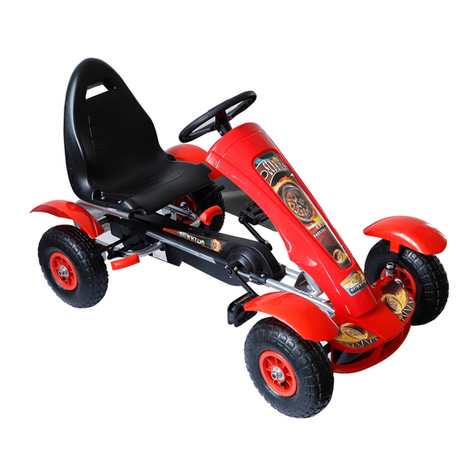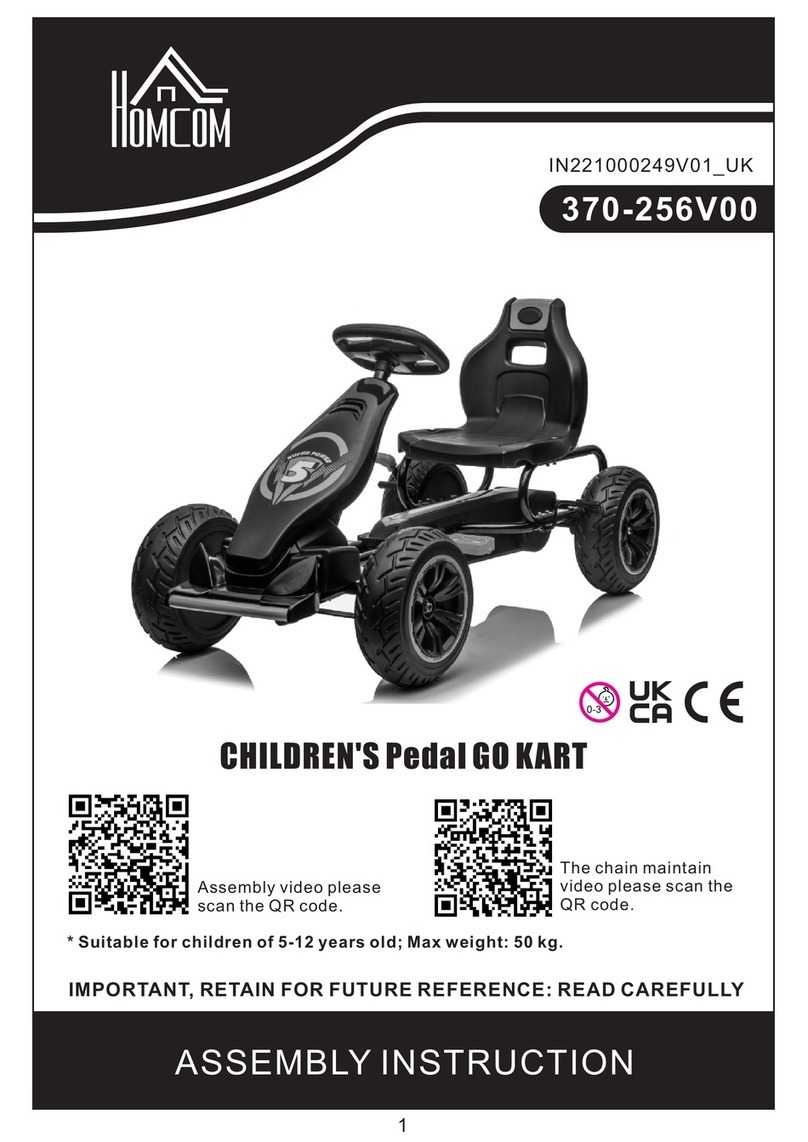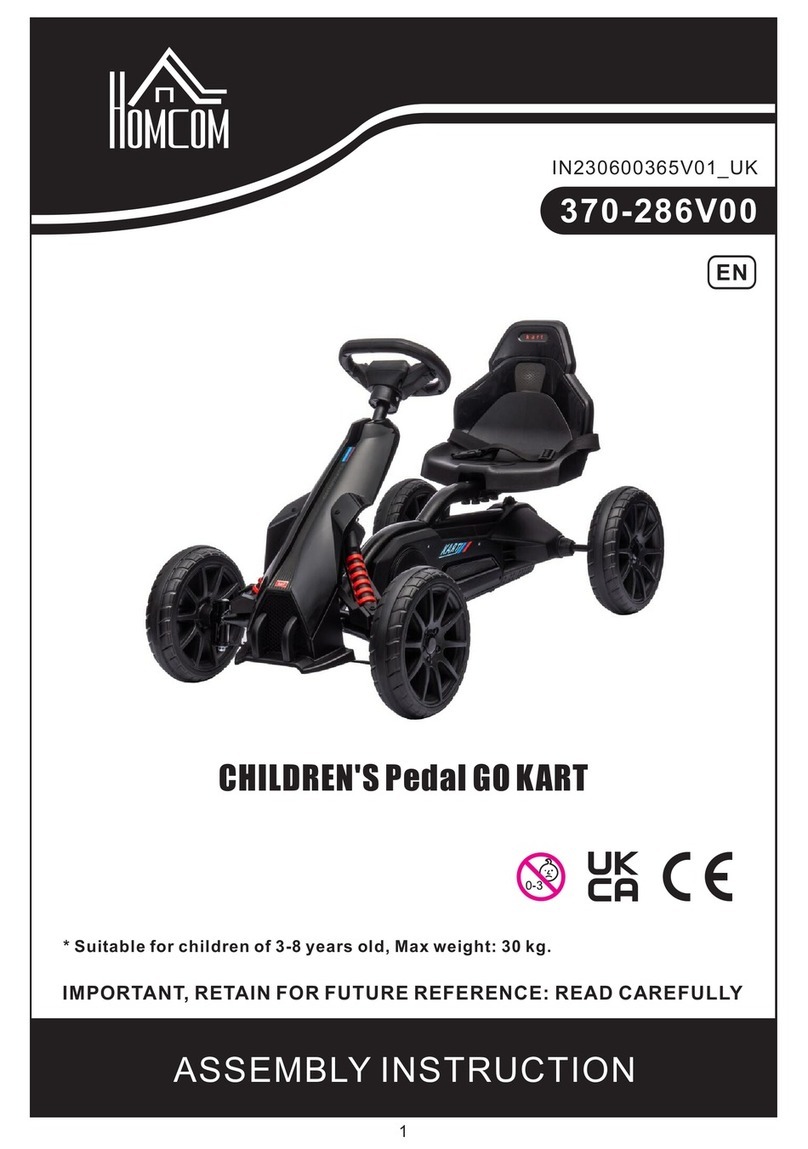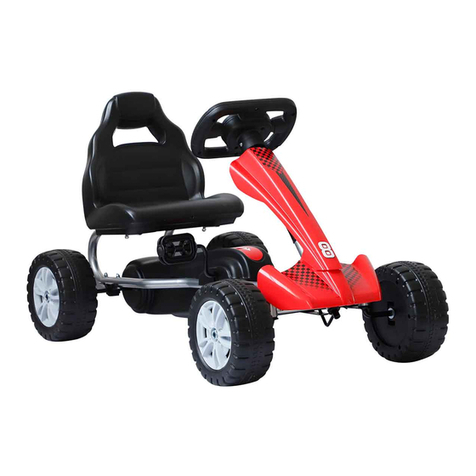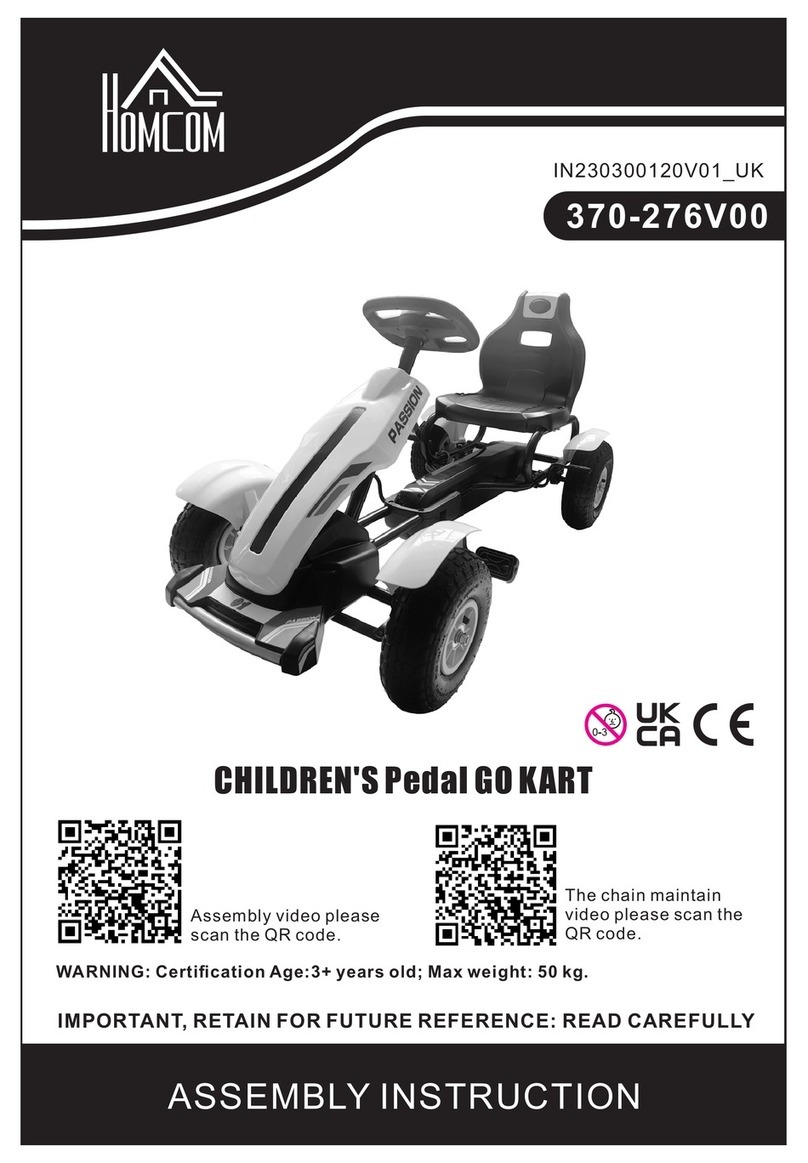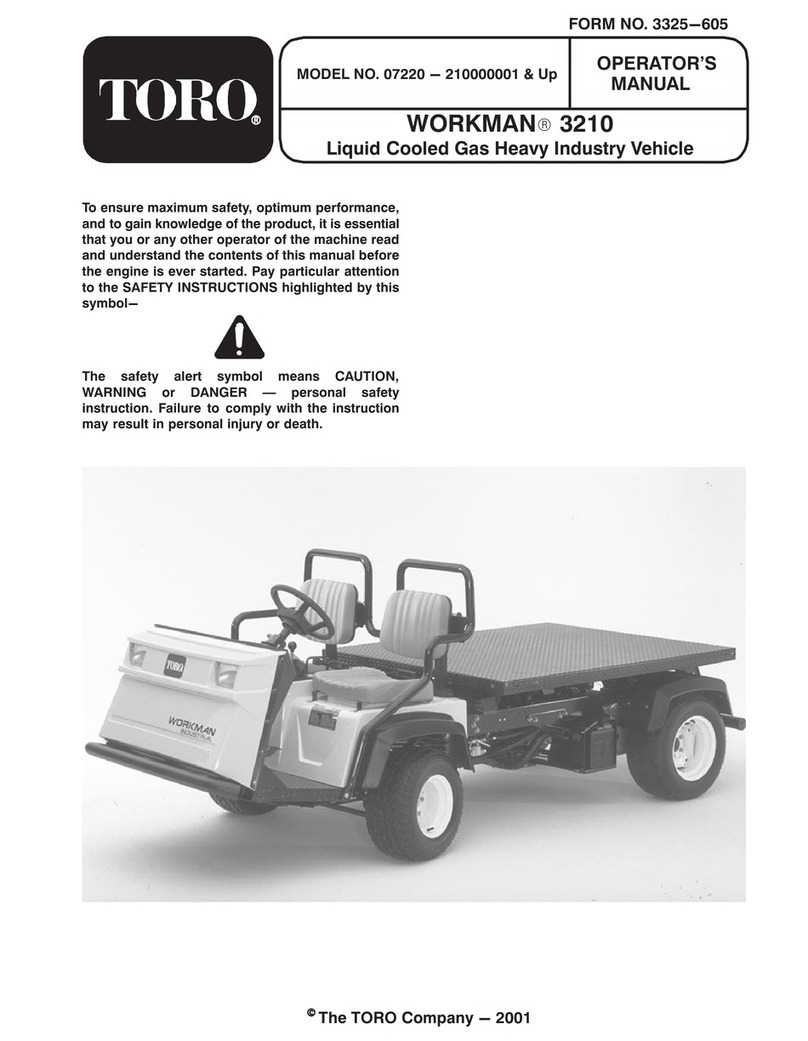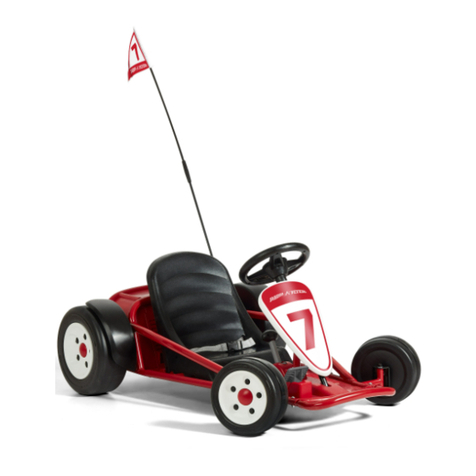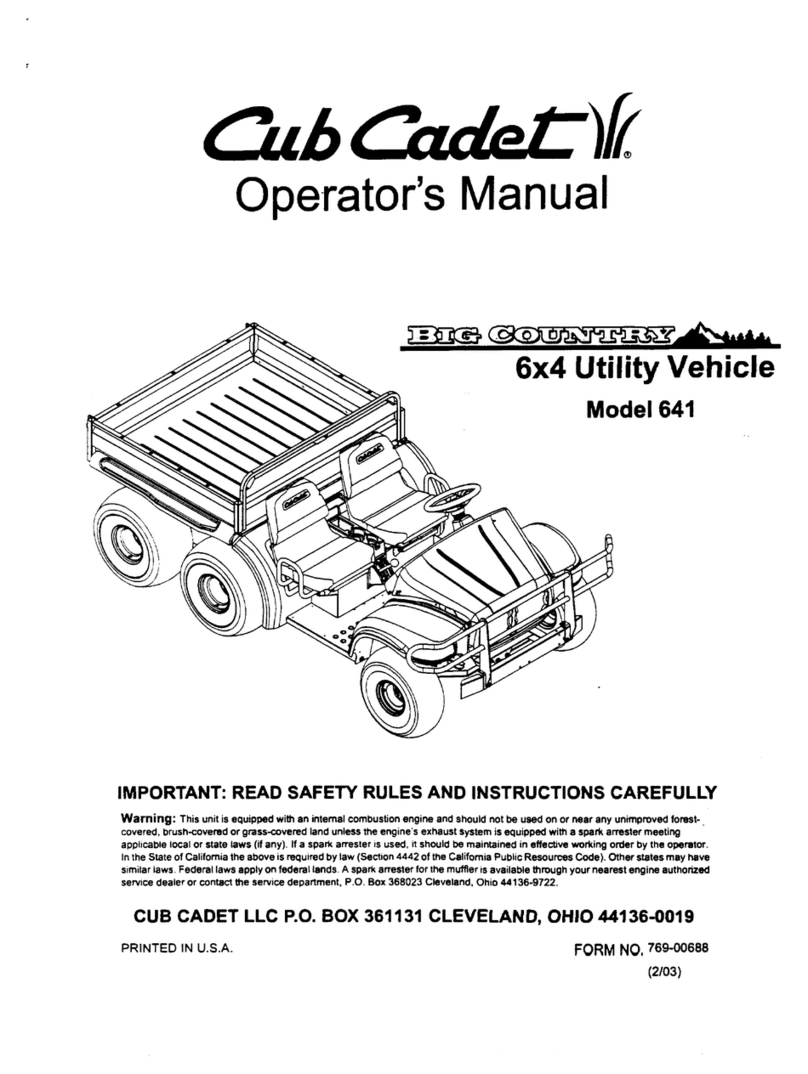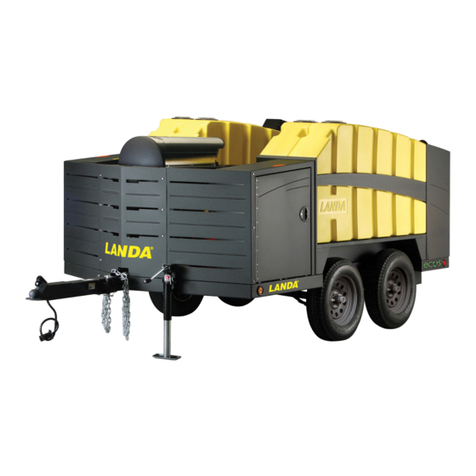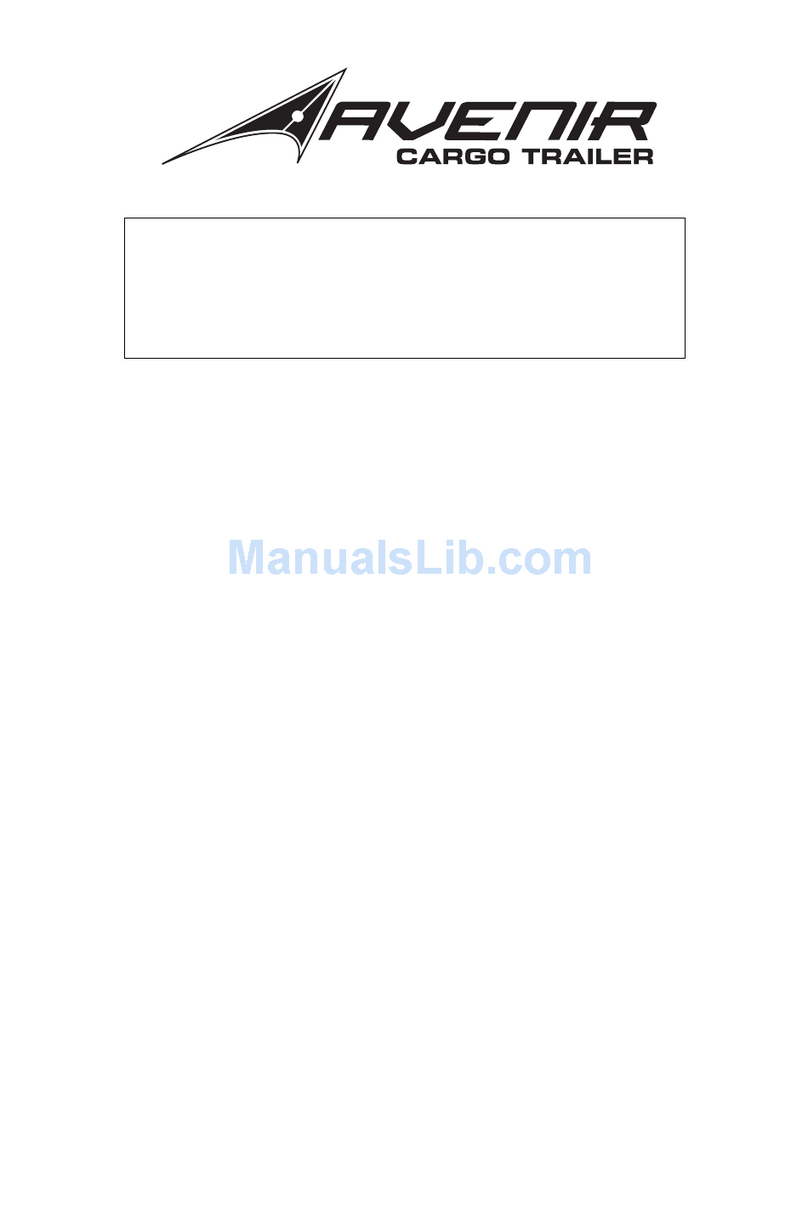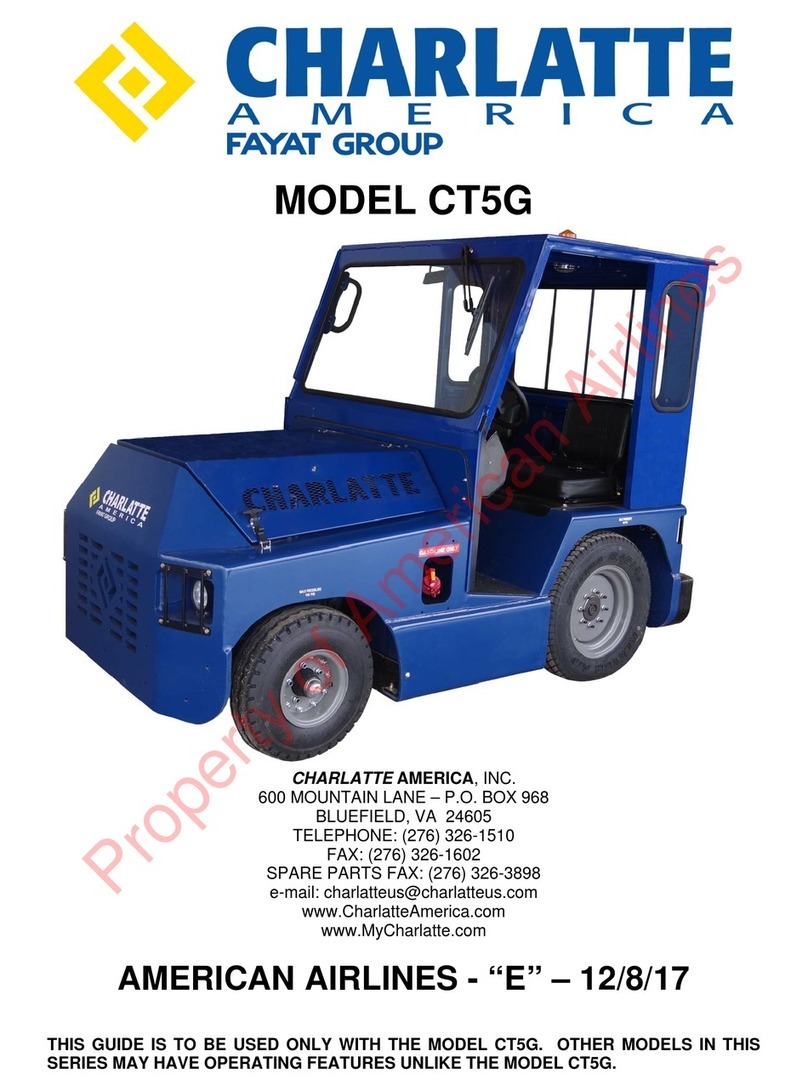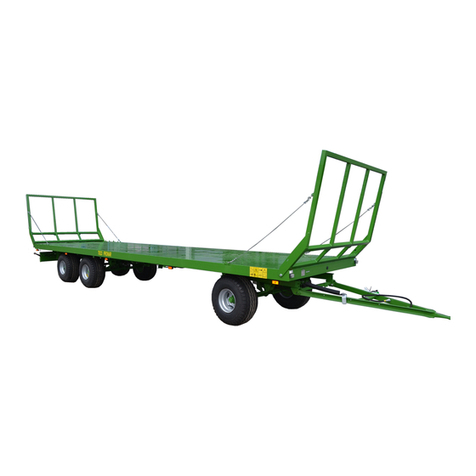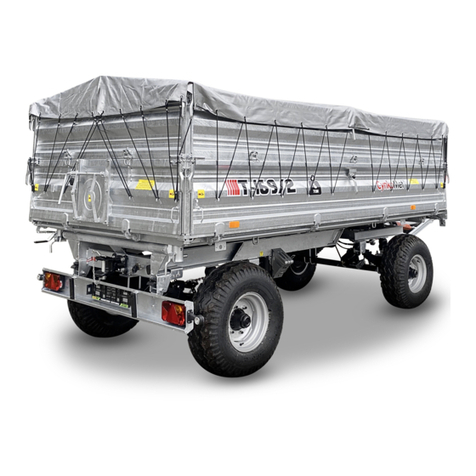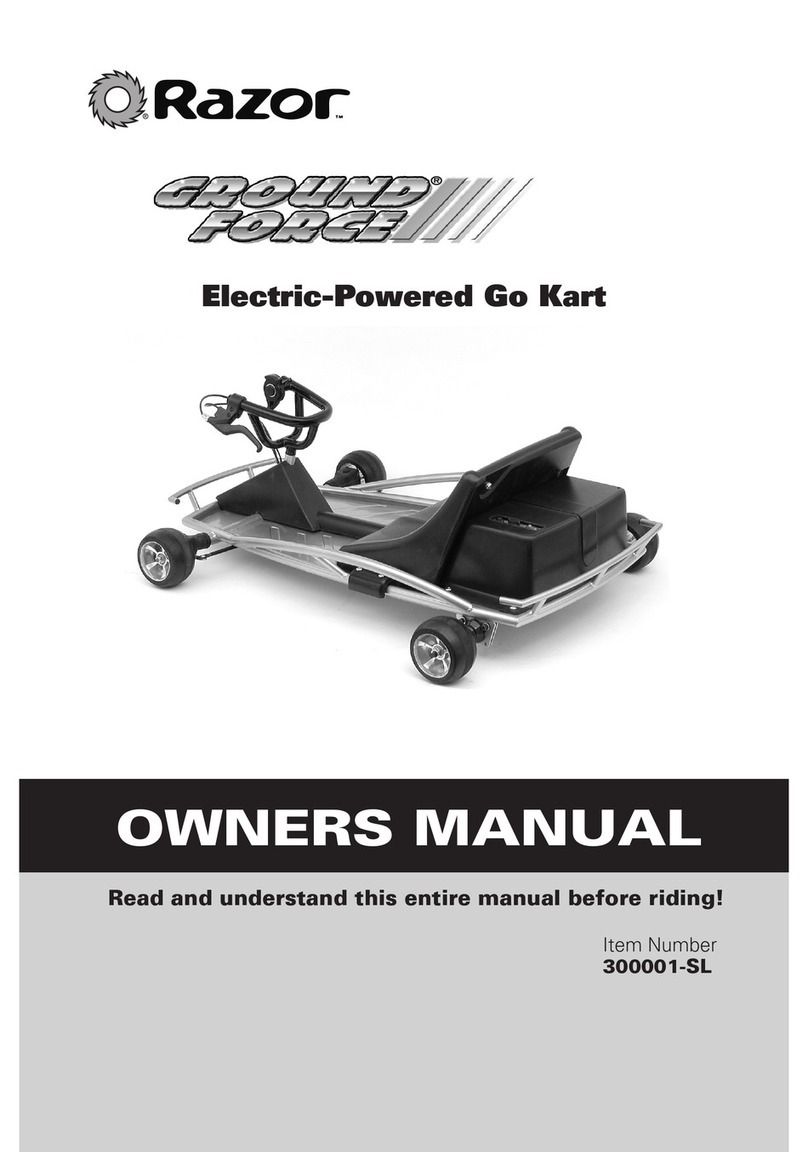HOMCOM 370-287V90 User manual

1
OWNER'S MANUAL
IMPORTANT, RETAIN FOR FUTURE REFERENCE: READ CAREFULLY
Please read entire manual before starting assembly.
Keep this manual along with your purchase receipt for future reference.
WARNING:
CHOKING HAZARD-Small parts.
Not for children under 3 years.
WARNING:
Toy must be assembled by adult before use.
CAUTION
Screws contain potentially
hazardous sharp points or sharp
edges. Adult assembly required.
WARNING
To reduce the risk of injury, adult
supervision is required. Never use on road
ways, near motor vehicles, on or near steep
inclines or steps,swimming pools or other
bodies of water. Always wear shoes, and
never allow more than one rider.
Contents, colors and decorations may vary from those shown.
EN
IN230700076V01_IT
370-287V90
CHILDREN'S ELECTRIC DRIFT GO KART

2
FOR THE SAFETY OF YOUR CHILD, PLEASE READ ALL WARNINGS AND
ASSEMBLY/USE INSTRUCTIONS. KEEP THIS GUIDE FOR FUTURE REFERENCE.
● ADULT ASSEMBLY REQUIRED. The product contains small parts, which are for
adult assembly only. keep small children away when assembling.
● Always remove protective material and poly bags and dispose before assembly.
● Never leave child unattended. direct adult supervision is required.
● Always keep child in view when child is in vehicle.
● Keep Children within Safe Riding Areas:
- Never use in roadways, near motor vehicles, on lawn space, on or near steep
inclines or steps, swimming pools or any other dangerous area.
● Use the toy only on flat surfaces. Such as inside your house, garden or playground.
● Never use in the dark. A child could encounter unexpected obstacles and have an
accident. Operate the vehicle only in the daytime or a well-lit area.
● Please avoid running on sand or any other rough ground.
● Always wear shoes.
● Always sit on the seat.
● This toy has no brake.
● It is prohibited to change the circuit or add other electric parts
● Inspect wires and connections of the vehicle periodically.
● Do not let any child touch the wheels or be near them when the car is moving.
● This vehicle has adjustable play seat belts. Please instruct children how to tie the
safety belt before using, guarantee the security.
Specifications:
Battery:
Motor:
Suitable ages:
Maximum weight:
Speed :
Power way:
Use of time:
Charger:
Charging type
Charg: 12 hours ; Use: 83 hours8- 0.
Input AC -240V, 50/60Hz, output DC 24V 1000 mA 100
WARNING
1.The pictures in this instruction is only for explaining the operation and structure of
the product, when there's any difference with the real product, please confirm with
the real product.
2.In order to improve the quality of the product, we may amend some structure or
appearance of the product without notification. Thank you for your understanding.
24V/5AH*1
24V 750# 150W*2
50kg
6-12km/h
6+ years

3
STORAGE BATTERY INFORMATION AND MAINTENANCE
● Please charge to hours before first time use.8 12
● Please use the suitable adapter to charge storage battery, otherwise the ride-on will
be damaged.
● Please charge the car once the speed is slower than normal, otherwise it will
decrease storage battery life.
● Please fully charge the battery before you put your ride-on away, and remember to
recharge the battery every 30 days. This will ensure the normal use of the battery,
otherwise, the battery might not hold a charge without proper maintenance.
● Batteries may leak fluids that can cause chemical burn injury or ruin your product.
● To avoid battery leakage: Do not mix old and new batteries or batteries of different
types: alkaline, standard (carbon-zinc) or rechargeable (nickel-cadmium).
● Insert batteries as indicated inside the battery compartment. Remove batteries
during long periods of non-use.
● Always remove exhausted batteries from the product. Dispose of batteries safely.
Do not dispose of batteries in a fire. The batteries may explode or leak.
● Never short-circuit the battery terminals.
● Non-rechargeable batteries are not to be recharged.
● Use only batteries of the same or equivalent type as recommended.
● Do not charge non-rechargeable batteries.
● Remove rechargeable batteries from the product before charging.
● If removable rechargeable batteries are used, they are only to be charged under
adult supervision
● Every single charging can not go over hours. Both charger and storage batteries 24
will occur mildly warm during charging. Do not use mal-functioned adapter or
storage battery unless they are repaired.
● Charger and storage batteries are not considered as toys.
● Please make periodical inspection for storage battery, especially for adapter wires
and plugs.
● Please turn off the switch when the ride-on is not in use. Please do a full charge after
long periods of inactivity.
● Charge in well ventilated, dry place. Do not open the battery or the charger.
● Tighten the screws with a screwdriver. DO NOT over tighten
Disposal Of Battery:
1.Your sealed lead-acid battery must be recycled or disposed of in an environmentally
sound manner.
2.Do not dispose of your lead-acid battery in a fire. The battery may explode or leak.
3.Do not dispose of a lead-acid battery in your regular, household trash. The
incineration, land filling or mixing of sealed lead-acid batteries with house-hold
trash is prohibited by law.

4
PREVENT FIRE AND ELECTRIC SHOCK:
- Use the only rechargeable battery and charger supplied with your vehicle.
- NEVER substitute the battery or the charger with another brand. Using another battery
or charger may cause a fire or explosion.
- Do not use the battery or charger for any other product. Overheating, fire or explosion
could occur.
- NEVER modify the electric circuit system. Tampering with the electric system may
cause a shock, fire or explosion or may permanently damage the system.
- Do not allow direct contact between battery terminals. Fire or explosion can occur.
- Do not allow any type of liquid on the battery or its components.
- Explosive gasses are created during charging. Do not charge near heat or flammable
materials. Charge the battery in a well- ventilated area ONLY.
- NEVER pick up the battery by the wires or charger. Damage can occur to the battery
and may cause a fire. Pick up the battery by the case ONLY.
- Charge the battery in a dry area ONLY.
● Battery posts, terminals and related accessories contain lead and lead compounds,
chemicals known to the State of California to cause cancer and reproductive harm.
Wash hands after handling.
● Do not open the battery. Battery contains lead acid and other materials that are toxic
and corrosive.
● Do not open the charger. Exposed wiring and circuitry inside case may cause electric
shock.
● ONLY adults may handle or charge the battery. NEVER allow child to handle or charge
the battery. Battery is heavy and contains lead acid (electrolyte).
● Do not drop the battery. Permanent damage to the battery could occur or cause serious
injury.
● Before charging the battery, check for wear or damage to the battery, charger, its supply
cord and the connectors. DO NOT charge the battery if any damage to parts has
occurred.
● Do not allow the battery to drain completely. Recharge the battery after each use or
once a month if not used regularly.
● Do not charge battery upside down.
● Always secure the battery with the bracket. Battery can fall out and injure a child if
vehicle tips over.
● It is parents' responsibility to check main parts of the toy before using, Must regularly
examine for potential hazard, such as the battery, charge, cable or cord, plug, screws
are fastening enclosure of other parts and that in the event of such damage, the toy
must not be until that damage had been properly removed. Make sure the plastic parts
of the vehicle are not cracked or broken.
● Occasionally use a lightweight oil to lubricate moving parts such as wheels.
● Park the vehicle indoors or cover it with a tarp to protect it from wet weather.
● Keep the vehicle away from sources of heat, such as stoves and heaters. Plastic parts
may melt.
● Recharge the battery after each use. Only an adult can handle the battery. Recharge
the battery at least once a month when the vehicle Raider is not being used.
● Do not wash the vehicle with a hose. Do not wash the vehicle with soap and water. Do
not drive the vehicle in rainy or snowy weather. Water will damage the motor, electric
system and battery.
● Clean the vehicle with a soft, dry cloth. To restore shine to plastic parts, use a non-wax
furniture polish. Do not use car wax. Do not use abrasive cleaners.
● Do not drive the vehicle in loose dirt, sand or fine gravel which could damage moving
parts, motors or the electric system.
● When not using, all the electrical source should be turn off. Turn off the power switch
and disconnect the battery connection.

5
Charger
Socket
Charge the Battery
The first charge will take about 12 hours.
1.Insert the charger connector into the charger port.
2.Plug the charger into a standard 120V or 230V wall outlet.
3.After charging it complete( at least 8-10 hours, but not more than 24 hours, with first
charge taking about 12 hours)unplug the charger from the wall outlet and unplug
the battery connector from the charger port.
• Plug the battery connector into the charger port.
• Plug the charger Into a standard wall outlet. The charger may feel warm during
charging.
• Only use the 24 volt charger to charge your 24 volt battery.
• Note: if power flow to the wall outlet is controlled by a switch , make sure the
switch is "ON”
• Before first-time use, charge the battery for at least 12 hours. Never charge the
battery longer than 24 hours.
• Recharge the battery for at least 8-10 hours after each use of your vehicle.
• Do not charge or store battery upside down. Charging produces explosive gases.
Charge away from flames, sparks and lit cigarettes. Charge in a well ventilated
area.
• Once the battery is charged, disconnect the battery connector from the charger
connector. Unplug the charger from the wall outlet. The battery is now ready to be
installed in your vehicle. Please see the following Battery installation Section for
detailed instructions on installing your vehicle:
Battery Replacement M4X16 Screw
M4X16 Screw
Remove the toolbox cover, take off the two M4X16 screws, and disconnect the plug
connector and terminal, lift the battery for replacement.

6
M1
L1
K1
J1
I2
E1
D1
C4
B1
A1
H2
G2
F2
Faceguard Spoiler
Main body
Seat Front Hub Caps-small
size
Steering wheel
Rear Wheel Rear Hub Caps-big size
Front Wheel
Steering Fork Rear Axle
Steering Rod
Toolbox Cover Fixed Part
O2
N1P5
M4*16M4*12

7
Note:
• Please identify all parts before assembly and save all packaging material until assembly
is completed to ensure that no parts are discarded.
• Metal parts have been coated with lubricant for protection during shipment. Wipe all
metal parts with a paper towel to remove any excess lubricant.
Assembly tools required:
Socket tool x2
(included) Screwdriver
(not included)
Assembly Instruction
Lock Nut Adjustment
1. Unfasten the lock nut to make the extention at the max status as the picture shown.
(four positions in total)
2. Make all the holes aligned and fasten the nut tightly.
Tip:The seat is adjustable and have four positions. Please choose the suitable
position as your child grows up.
Front Axel Assembly
1
1. Lift the screw until it is aligned with the axle and nut, insert a M6X13 screw , and tighten
a M6 nut on the opposite side.

8
Front Fork Assembly
1.Put the fork to the right place of the body.
2.Lift the screw until it is aligned with the hole and nut, insert a M5X30 screw , and tighten
a M5 nut on the opposite side.
Faceguard Assembly

9
1.Lift the faceguard.
2.Plug the connector from the vehicle body into the connector on the faceguard.
3.Put the fixed part to the faceguard.
4.Tighten two M4x16 screws through the fixed part into the faceguard.
5.Tighten one M4x16 screw through the faceguard into the vehicle body.
Steering Rod Assembly
1. Turn the vehicle body upright. Insert the steering rod to the vehicle body.
Steering Wheel Assembly

10
1. Lift the steering wheel.
2. Plug the connector from the steering wheel into the terminal on the faceguard.
3. Lift the screw until it is aligned with the hole and nut, insert a M5X53 screw, and tighten
a M5 nut on the opposite side.
Rear Axle A ssembly
Insert the rear axle to the main body from left to right ,make the two side with the same
length.
Rear Wheels Assembly
Rear Wheel

11
1. Slide the rear wheel onto the rear axel, and keep the rear wheel match up with the gear
box.
2. Slide the M8X1.3 washer onto the rear axel.
3. Tighten a M8 screw nut to the end of the rear axle with a socket tool, take the same
precedure on the other side at the same time.
4. Snap the hub caps to the rear wheel, do the same procedure for the other rear wheel.
Front Wheels Assembly
Front Wheel
1.Slide the M8X1.3 washer onto the front axle.
2.Slide the front wheel onto the axle.
3.Slide the M12X1.5 washer onto the front axle.
4.Tighten a M8 screw nut to the end of the front axle with a socket tool, take the same
precedure on the other side.
5.Snap the hub caps to the front wheel, do the same procedure for the other front wheel.
Seat Assembly

12
1.Put the seat to the main body in the right place.
2.Fasten the seat with two M4X16 screws(left& right) by the screwdriver (not included)
Connect the Power Supply
Plug the connector from the battery to the terminal from the vehicle body, match the same
color.
Spoiler A ssembly

13
1.Fit the spoiler into the groove in the toolbox cover.
2.Fasten it with two M4X12 screws by the screwdriver(not included).
3.Fit the spoiler assembly into the groove at the back of the main body.
Operating your vehicle
5

14
1
23
4
1. Power switch: Turns the product on and off.
2. Light Button
3. High/Low speed switch: Operates the product to move forward in high or low speed.
4. Drift/Sport Mode: Operates the product at the Sport Mode, press the Drift Mode if want
to have the function.
Accelerator pedal: To move the product, press the pedal down.
5. Forward/Stop/Reverse Lever: Changes the direction that product moves from forward
to reverse.
● To move the product forward, shift the lever to top position.
● To move the product backward, shift the lever to down position.
● Shift the lever to middle position, the product will not move.
6. Accelerator Pedal: Operates the product to move forward or backward.
7. Brake pedal: Press down the pedal, the product will slow down until it stops.
8. Horn button.
9. Battery indicator: Here shows the remaining power of the battery.
10. USB socket.
11. Next / Volume + / Music button
12. SD card socket
13. AUX socket
14. Next song/story/; long press, volume up.
15. Play / Pause
16. Previous song/story;long press, volume down.
17. Modes include music, story, FM, Bluetooth.

15
car does
not move
Circuit breaker tripped
Loose wire or connectors
Dead battery
Undercharged battery
Charger is not working
Damaged switch
Circuit breaker may "trip" and stop the
vehicle if it is overloaded or the driving
conditions too severe. The breaker will
automatically reset after approximately
10 seconds, and the vehicle will operate
normally. To avoid repeated automatic
shut downs, do not overload the vehicle
by exceeding the weight limited of 25kg
(55 lbs).Or by towing anything behind
the vehicle. Do not drive up hills or run
into fixed objects, which can cause the
wheels to stop spinning while power is
still being supplied to the motors.
Check all wires and connectors Make
sure that the motor harness connector is
plugged in tightly to the battery, and that
there are no loose wires around the
motor.
An old or improperly cared battery may
be dead. If you are unsure whether it is
dead or not, you can have it tested at
your Service Canter.
A new battery should have been charged
for at least 12 hours before using the
vehicle for the first time. After that, it
must be recharge the battery for at least
8-10 hours after each use. Never charge
longer than 24 hours. Check all
connectors; make sure the charger is
plugged into the wall. Make sure the
power flow to the outlet is on.
You must have a volt meter in order to
tell whether the charger is working or
not. If you think there maybe a problem
with the charger, take it to the Service
Center where they will test it for you.
When exposed to water or moisture,
switches can become corroded, or can
jam due to loose dirt, sand or gravel.
Contact your Service Center for
diagnosis and repair.
Problem Possible Cause Solution
Troubleshooting

16
Car was
running but
suddenly
stopped
Loose wire or connectors
Circuit breaker tripped
Check all wires and connectors. Make
sure that the motor harness connector
is plugged into the battery tightly, and
that there are no loose wires around
the motor.
Circuit breaker may "trip" and stop the
vehicle if it is overloaded or the driving
conditions too severe. The breaker
will automatically reset after
approximately 10 seconds, and the
vehicle will operate normally. To avoid
repeated automatic shutdowns, do not
overload the vehicle by exceeding the
weight limited of 50kg (110 lbs), or by
towing anything behind the vehicle.
Do not drive up hills or run into fixed
object, which can cause the wheels to
stop spinning while power is still being
supplied to the motors. lf breaker
continually trips, contact your Service
Center.
Short
operating
time (less
than 1 hours
per charge)
Undercharged battery
Overcharged battery
Old battery will not
accept a full charge
A new battery should have been
charged for at least 12hours before
using the vehicle for the first time. After
that, it must be recharge the battery for
at least 8-10 hours after each use.
Never charge longer than 24 hours.
Check all connectors; make sure the
charger is plugged into the wall. Make
sure the power flow to the outlet is on.
Never charge battery longer than 24
hours. lf you think the battery maybe
damage due to overcharging, contact
Service Center for testing.
Even with proper care, a rechargeable
battery does not last forever. Average
battery life is 1 to 3 years depending on
vehicle use and use conditions.
Replace the battery with a new
rechargeable battery. Do not substitute
parts. To get a replacement battery,
please contact Service Center.
Problem Possible Cause Solution

17
Vehicle is
sluggish
Undercharged
battery
Battery needs
charging
Old battery will not
accept a full charge
Vehicle is overloaded
Driving conditions
are too stressful
A new battery should have been charged
for at least 12hours before using the
vehicle for the first time. After that, it must
be recharge the battery for at least 8-10
hours after each use. Never charge longer
than 24 hours. Check all connectors;
make sure the charger is plugged into the
wall. Make sure the power flow to the
outlet is on.
Be sure to charge the battery after each
use.
Even with proper care, a rechargeable
battery does not last forever. Average
battery life is 1 to 3 years depending on
vehicle use and use conditions. Replace
the battery with a new rechargeable
battery. Do not substitute parts. To get a
replacement battery, please contact
Service Center.
Allow no more than 1 rider at a time, follow
the 50kg (110lbs) weight capacity and
don't tow anything behind the vehicle.
Use only on a generally level ground.
Intermittent
vehicle
operation
When the
accelerator is
pressed, the
vehicle won't
run without a
push
Motor gear
box makes a
loud grinding
or clacking
noise
Charger get
warm during
use
Battery makes
gurgling or
sizzling noise
while charging
Loose wire or
connector
Motor or electrical
switch damage
Loose wire or
connector
"Dead Spot on motor
Broken gears
This is normal and
should not be concern
Some noise and
swelling is normal and
should not be a
concern
Check all wires around the motors and all
connectors to make sure they are tight.
Contact your Service Center for diagnosis
and repair.
Check all wires around the motors and all
connectors to make sure they are tight.
Contact your Service Center for diagnosis
and repair.
Contact your Service Center for diagnosis
and repair.
No action required.
No action required. lf the battery does not
make noise while charging. It does not
mean it is not accepting the charging.
Problem Possible Cause Solution

18
Parts diagramParts diagram
Note: Some parts shown are assembled to both sides of the vehicle.
No. Part
10. Rear Hub Cap
11. Rear Wheel
12. Toolbox Cover
13. Spoiler Assembly
14. Seat
15. Steering Fork
16. Steering Wheel
17. Faceguard
Quantity
2
2
1
1
1
1
1
1
No. Part
1. Steering Rod
2. Main Body
3. Lock Nut
4. Front Wheel
5. Front Hub Cap
6. Battery Box
7. Motor Cover
8. Rear Axle
9. Gear Box
Quantity
1
1
2
2
2
1
2
1
2

19
Leggere il manuale per intero prima di iniziare il montaggio.
Conservare questo manuale insieme alla ricevuta di acquisto per riferimenti
futuri.
IT
IN230700076V01_IT
370-287V90
GO KART ELETTRICO PER BAMBINI
ISTRUZIONI DI ASSEMBLAGGIO
IMPORTANTE! CONSERVARE IL PRESENTE MANUALE PER FUTURO RIFERIMENTO
E LEGGERLO ATTENTAMENTE.
AVVERTENZA:
RISCHIO DI SOFFOCAMENTO-Parti
piccole. Non adatto ai bambini sotto i
3 anni.
AVVERTENZA:
Il giocattolo deve essere assemblato da un
adulto prima dell'uso.
ATTENZIONE:
Le viti contengono punti
conduntenti o bordi taglienti
potenzialmente pericolosi. È
richiesto il montaggio da parte di un
adulto.
AVVERTENZA:
Per ridurre il rischio di lesioni personali, è
necessaria la supervisione di un adulto. Non
usare mai su strade, vicino a veicoli a
motore, su o vicino a pendii o gradini ripidi,
piscine o altre fonti d'acqua. Indossare
sempre scarpe e non consentire mai più di
un utente alla volta.
I contenuti, i colori e le decorazioni possono variare da quelli mostrati in figura.

20
PER LA SICUREZZA DEL VOSTRO BAMBINO, SI PREGA DI LEGGERE TUTTE LE
AVVERTENZE E LE ISTRUZIONI DI MONTAGGIO / USO. CONSERVARE QUESTO
MANUALE PER RIFERIMENTI FUTURI.
● VA ASSEMBLATO DA UN ADULTO. Il prodotto contiene piccole parti, e pertanto va
montato solo da adulti. Tenere lontano i bambini piccoli durante il montaggio.
● Rimuovere sempre l'imballaggio e i sacchetti di plastica e smaltirli prima del
montaggio.
● Non lasciare mai i bambini incustoditi. è richiesta sempre la supervisione diretta di
un adulto.
● Sorvegliare sempre il bambino quando si trova nel veicolo.
● Tenere i bambini in aree di guida sicure:
- Non usare mai su strade, vicino a veicoli a motore, su prati, su o vicino a pendenze
o gradini ripidi, piscine o qualsiasi altra area pericolosa.
● Utilizzare il giocattolo solo su superfici piane. Come ad esempio all'interno della
vostra abitazione, in giardino o al parco giochi.
● Non usare mai al buio. Un bambino potrebbe incorrere in ostacoli imprevisti e avere
un incidente. Utilizzare il veicolo solo di giorno o in un'area ben illuminata.
● Evitare di guidare sulla sabbia o su qualsiasi altro terreno accidentato.
● Indossare sempre le scarpe.
● Sedersi sempre sul sedile.
● Questo giocattolo non e' dotato di freni.
● È vietato cambiare il circuito elettrico o aggiungervi altre parti.
● Ispezionare periodicamente cavi e collegamenti elettrici del veicolo.
● Non lasciare che nessun bambino tocchi le ruote o si trovi vicino ad esse quando
l'auto è in movimento.
● Questo veicolo è dotato di cinture di sicurezza regolabili. Si prega di istruire i
bambini su come legare la cintura di sicurezza prima dell'uso, per garantire la loro
sicurezza.
Specifiche:
Batteria:
Motore:
Eta' Adatta:
Peso Massimo:
Velocita':
Alimentazione:
Tempistiche:
Caricatore:
Ricaricabile
Ricarica: ore ; Uso: ore8-12 0.83
Ingresso AC V, 50/60Hz, produzione DC 24V mA 100-240 1000
AVVERTENZE
1.Le immagini in questo manuale servono solo per spiegare il funzionamento e la
struttura del prodotto, se vi sono differenze con il prodotto reale, si prega di rifarsi a
quest'ultimo.
2.Per migliorare la qualità del prodotto, potremmo modificare alcune strutture o
aspetti dello stesso senza preavviso. Vi ringraziamo per la vostra comprensione.
24V/5AH*1
24V 750# 150W*2
50kg
6-12km/h
6+ anni
Table of contents
Languages:
Other HOMCOM Utility Vehicle manuals
Popular Utility Vehicle manuals by other brands

Taylor-Dunn
Taylor-Dunn ET 1-50 48 Volts Operation and maintenance manual

Club Car
Club Car 2002 Pioneer 1200 owner's manual

Hydrotech
Hydrotech HMT-4004-0MGH Operator's manual
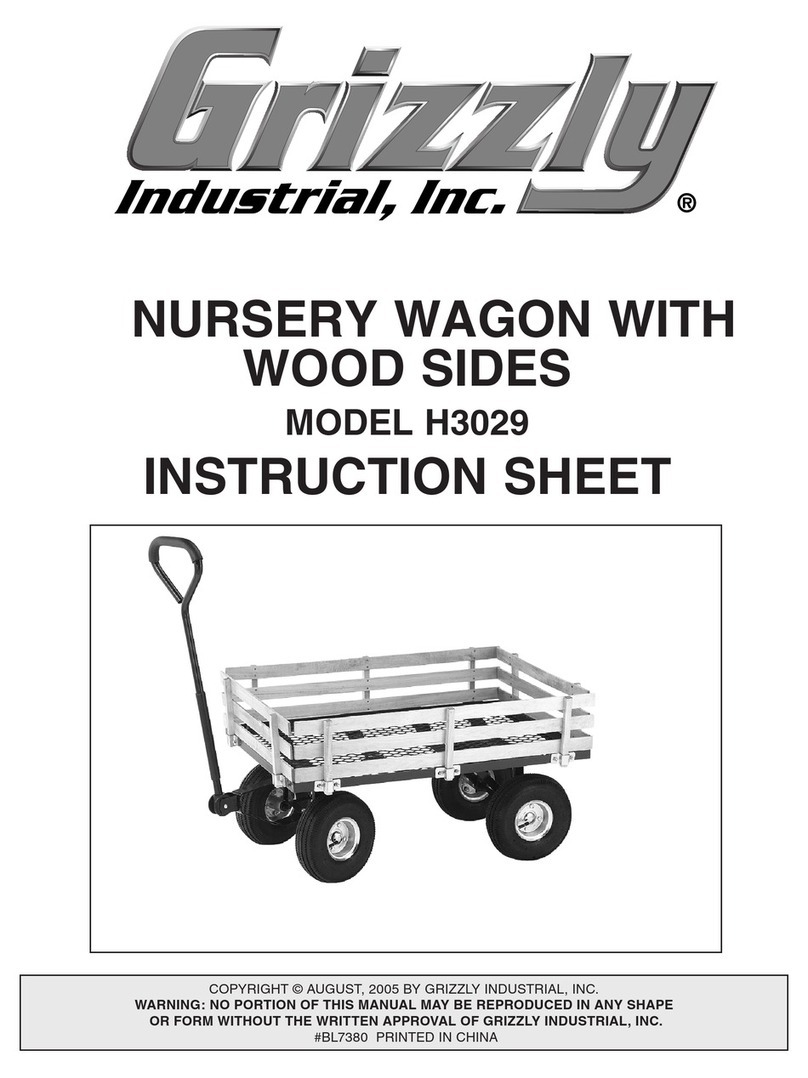
Grizzly
Grizzly H3029 instruction sheet

Fruehauf
Fruehauf Extreme USER MANUAL - MAINTENANCE LOGBOOK
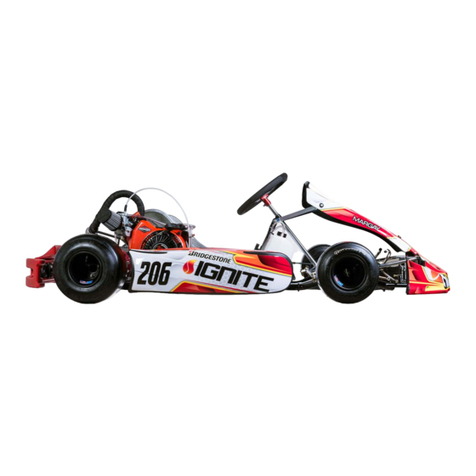
Ignite
Ignite MARGAY racing K3 Setup guide
